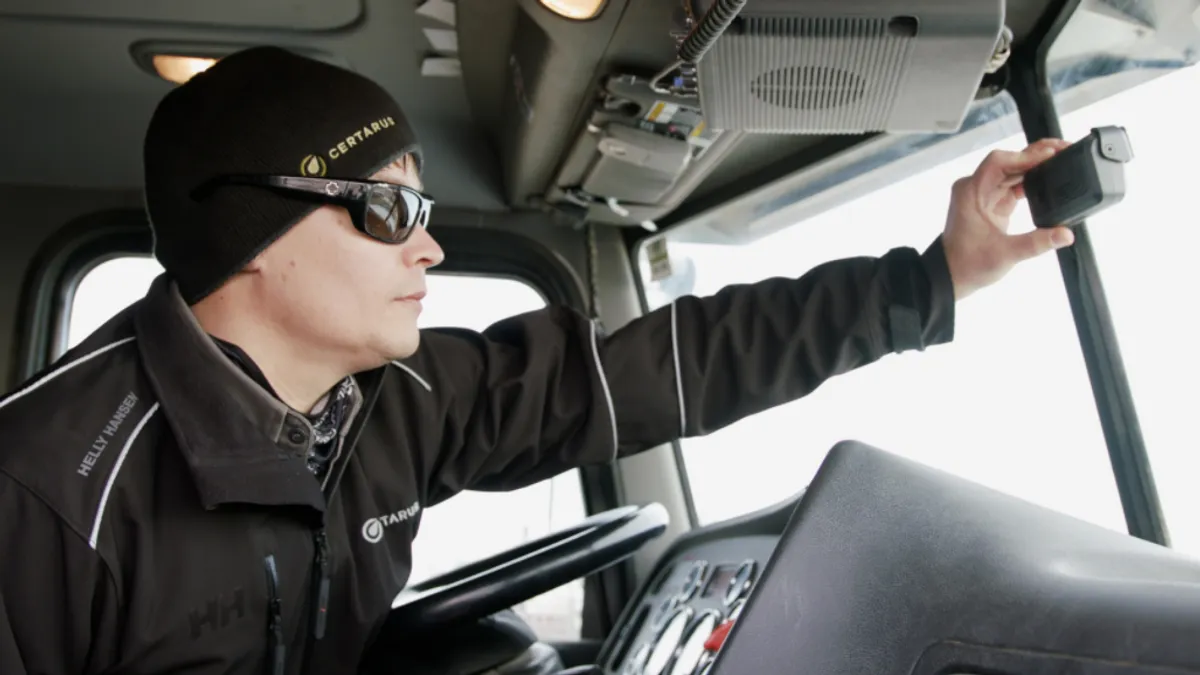Software-as-a-service (SaaS) company Samsara went from $0 to $500 million in annual revenue in just six years by convincing small and medium-sized companies to enter into guaranteed long-term contracts to help it absorb hardware costs and devoting half its headcount to sales staff, Jason Lemkin of SaaS-best practices company SaaStr says.
The company’s core product, a kind of Internet of things technology, helps fleets track mileage and other performance indicators over the Internet by using vehicle sensors. As hardware, the sensors are expensive to produce and manage, but the company gets 72% gross margins out of each customer contract, in part by requiring customers to enter into agreements of 3-5 years, enabling Samsara to amortize the costs over time.
“Small and mid-sized businesses (SMBs) usually don’t like to sign contracts for 3-5 years, but Samsara has been able to get them to do it because the [customers] understand they’re getting hardware for it and it needs to be amortized,” Lemkin said in a SaaStr webcast.
Lemkin said he’s an investor in another company that has a similar hardware-software model but doesn’t get its customers to lock in on long-term contracts for the hardware.
“The hardware costs are only about $80 per customer, but if a customer is paying you $20 to $30 a month, that adds another 3-4 months to your payback, and if you don’t have a guaranteed contract, it’s stressful,” he said. “Samsara proved you can build a rocket ship with multi-year contracts with SMBs if there’s a fair and valid reason for it.”
Internet of things model
Samsara, which raised more than $800 million when it went public in mid-December at a valuation of nearly $11 billion, was launched in 2016 by the founders of a company called Meraki. Cisco bought Meraki in 2012 after it had developed a kind of prototype Internet of things technology.
Because of the success they had with Meraki, a rare unicorn at the time it was sold, the founders were able to capitalize Samsara with only two venture funding rounds while retaining more than 50% ownership for themselves. That made them billionaires when Samsara went public.
“They took advantage of that [earlier success] to raise more money earlier from [venture funds],” Lemkin said.
Under those two venture raises, Andreessen Horowitz acquired 18% ownership and General Catalyst, 10%, Lemkin said. Other venture firms that participated in the two rounds, including Dragoneer Investment Group and Tiger Global Management, got smaller shares. The two founders retain around 25% each for themselves.
It wasn’t just their track record of success that enabled them to attract sufficient capital to grow in just two rounds, said Lemkin. It also helped that they had built a highly efficient sales model.
Under that model, the company devotes almost 700 of its 1,500 employees to sales, a huge number that Lemkin said is needed to drive initial growth around smaller customers paying between $5,000 and $20,000 annually.
“You need folks to do inside sales and maybe low-end field sales,” he said. “That’s a good metric to think about if you’re going to do a sales-driven SME or SMB [business].”
Upmarket growth
As a public company, it plans to move away from the SMB market and focus on customers paying $100,000 a year or more. It’s already generating the lion’s share of its revenue from these larger customers.
“These tiny, $1,000-$5,000 customers … are half their customers by number but only 7% of the revenue,” he said.
In its financials, it considers companies that spend $5,000 a year and up its core customer, leaving out those spending under that when it calculates its net revenue retention (NRR) metric. “They’ve outgrown their smaller customers,” he said.
Since it started focusing on $100,000-a-year customers, it’s adding them at a rate of about two a day, up from two a week just a year ago.
“At the start of 2020 they had 92 $100,000 customers, so it took them a while,” he said. “They weren’t closing $100,000 customers literally every single day. Fast forward, today they have 715.”
New verticals
Part of that growth stems from its expansion into verticals outside fleet management. Although that remains its core vertical, it generates only 23% of its revenue from that today. It’s generating 17% of its revenue from retail, and the rest from construction, utilities, energy and manufacturing, among others.
“It’s just a reminder that, even if your product does one core thing, having vertical specialization and teams that go to different industries to expand your industry footprint can be one of the great ways to grow,” he said. “If they had only focused on the most obvious applications for their product, transportation, they’d [still] be at $100 million and something in revenue.”




















